Manage Care

Lead Screening in Children Tip Sheet
Measure Description:
The percentage of children two years of age who had one or more capillary or venous lead blood test for lead poisoning by their second birthday.
Incentives are paid to the linked primary care provider (PCP) on an annual basis, following the end of quarter four. For additional information, refer to the CBI Technical Specifications.
- Administrative members on date of child’s second birthday.
- Dual coverage members.
- Members in hospice, receiving hospice services, or who died during the measurement year.
Document the date the test was performed and the test result or finding.
California law requires a blood lead test for Medi-Cal members at 12 and 24 months of age and requires healthcare providers who perform blood lead analysis to report all results to the California Department of Public Health (CDPH) Childhood Lead Poisoning Prevention Branch. Providers should perform a catch-up test for children 24 months to six years of age who were not tested at 12 and 24 months.
DHCS requires that providers give oral or written anticipatory guidance to parents/guardians of a child at each periodic health assessment, from six to 72 months of age, which includes information related to the harms of lead.
Network providers are not required to perform a blood lead screening test if either of the following applies:
- In the professional judgment of the provider, the risk of screening poses a greater risk to the child member’s health than the risk of lead poisoning. This must be documented in the medical record.
- If a parent/guardian or other person with legal authority withholds consent to the screening, the provider must obtain a signed statement of voluntary refusal or document the reason for not obtaining a signed statement in the child’s medical record. For example, when services are provided via telehealth or the party declines to sign.
- For more information, reference the California Department of Public Health Standard of Care Guidelines on Childhood Lead Poisoning for California Health Care Providers and All Plan Letter 20-16.
CPT: 83655
Data for this measure is collected using claims, laboratory data, DHCS Fee-For-Service encounter claims and provider data submissions via the Data Submission Tool (DST) on the Provider Portal.
To find gaps in data:
- Run a report from your electronic health record (EHR) system; or
- Manually compile patient data. For example, download the Lead Screening in Children quality report or your Care-Based Incentives Measure Details report from the Provider Portal and compare to your EHR/paper records.
- Exposure to lead in children can cause damage to the brain and other vital organs, as well as intellectual and behavioral deficits.
- Research suggests there is no safe blood lead level (BLL) and its effects are irreversible. Chelating agents that intend to remove lead may reduce fatality rates but have not been demonstrated to improve IQ or behavioral consequences of lead exposure. See the CDC Lead Poisoning Prevention page for more information.
- Children exposed to lead have no obvious symptoms; as a result, lead poisoning often goes unrecognized.
- Elevated blood lead levels primarily affect children with a lower socioeconomic status and children from minority communities because of the increased risk of housing-related exposure (U.S. Preventive Services Task Force).
- Conduct an environmental assessment prior to blood lead screening of children at risk for lead exposure. These assessments can include toys, pottery, cosmetics, folk remedies, food and candy. In some subpopulations, imported products, foods and folk remedies may be more commonly found and are a more substantial contributor to lead exposure.
- Screening types:
- Initial screen: point of care testing; capillary.
- Confirmatory testing: venous sample.
- CDC recommends screening all immigrant, refugee and internationally adopted children when they arrive in the U.S. due to their increased risk.
- Help parents identify if their child has been exposed or has continuous exposure (paint chips, regular visits to houses built before the 1950s, lead in soil, water, pottery and candies from other countries, etc.) and encourage parents to avoid possible lead exposures.
- Monitor all children with a confirmed BLL ≥3 µg/dL for subsequent increase or decrease in BLL until all recommended environmental investigations and mitigation strategies are complete. CDC limit is <3.5 (2024).
- Primary prevention is the most important and significant strategy to reduce BLLs.
- Provide nutritional guidance and recommend a well-balanced diet. Calcium, iron and vitamin C play a specific role in minimizing lead absorption.
- Accumulation of lead can begin during pregnancy. Conduct initial and follow-up screening of pregnant and lactating persons.
- When interacting with affected families, offer simple information about the meaning of BLL results, and relevant and culturally sensitive messages about the impact of lead levels.
- Alliance Cultural and Linguistic Services are available to network providers.
- Language Assistance Services – request materials at 800-700-3874, ext. 5504.
- Telephonic Interpreter Services – available to assist in scheduling members.
- Face-to-Face Interpreter Services – can be requested for the appointment with the member.
- For information about the Cultural and Linguistic Services Program, call the Alliance Health Education Line at 800-700-3874, ext. 5580 or email us at [email protected].
- Alliance Transportation Services for patients with transportation challenges.
- Non-emergency medical transportation (NEMT), call 800-700-3874, ext. 5640 (TTY: Dial 711).
- Non-medical transportation (NMT), call 800-700-3874, ext. 5577 (TTY: Dial 711).
- All Plan Letter 20-16.
- Blood Lead Testing Flyer – California Department of Public Health (CDPH).
- California Management Guidelines on Childhood Lead Poisoning for Health Care Providers.
- Standard of Care Guidelines on Childhood Lead Poisoning for California Health Care Providers.
- Strategies to Increase Blood Lead Screening and Testing – California Department of Public Health (CDPH).
Contact us | Toll free: 800-700-3874
Member Resources
GRIEVANCE FORM
Member Handbook
Health Rewards Program
Continuity of Care Policy
The Alliance
© 2025 Central California Alliance for Health | Website Feedback

